Post offices
post offices
Yeovil's five main Post Offices and the sub-offices
"In 1677 in a report on the practical management of the General Post Office a diagram of the west Postal road shows Shaftesbury, Sherborne and Crewkerne as post towns and a by-post running from Yeovil through Ilchester and Somerton to Bridgwater and Wells. According to the same report Messrs Franklyn (salary £40), Hoddinott (£35) and Greeneway (£30) were postmasters for the Shaftesbury, Sherborne and Crewkerne stages and Mr Mynes was postmaster at Yeovil. 'The Post goeth to Plimouth the 3 usual Post Nights arriving within 3 dayes and returneth in equal Time'. At the time of this report it would seem that some use was made of the stage coach, presently to be mentioned, along the west road but that mounted post-boys proceeding at the rate of five miles an hour were the usual means of conveyance. The charges of 3d for a single Letter and 12d an ounce applied to all places in England and Wales beyond eighty miles and those of 2d and 8d to places of less distance.
Information with regard to post office charges and receipts in the west is also available for the nine months ending Lady Day 1685, that is for the closing period of the reign of Charles II. The clerks of the West Road (Mr Benjamin Lambe) and of the Bristol Road were receiving salary at the rate of £60 per annum, and the postmasters at Crewkerne at £40, of Taunton at £30 and of Wells and Bridgwater at £20. Large sums, however, were due and payable to His Majesty by the postmasters on this Lady Day, viz £83 4s 1d from Crewkerne and £60 11s 5d from Taunton, while amounts were also owing from Mr Francis Mines, whom we have seen postmaster at Yeovil at an earlier date, and from Mr William French also of Yeovil as well as from the postmaster at Bridgwater and from the women who had charge of the offices at Wells and Sherborne." (Nathan. Annals of West Coker).
BJ Forbes was appointed Postmaster at Yeovil in 1737 and recorded on the first page of the 'British Postal Service Appointment Books, 1737-1969', shown below.

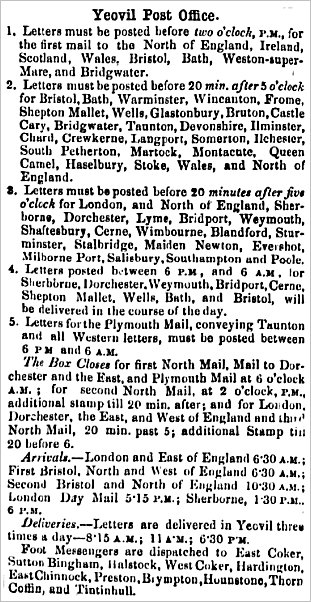
It seems that posting a letter wasn't so easy in Victorian times. The above schedule is taken from the 31 October 1854 edition of the Western Flying Post.

Letter boxes in the streets were a relatively early innovation, as this cutting from the Western Daily Press edition of 3 March 1859 shows.
The painting below, shows Yeovil's first Post Office
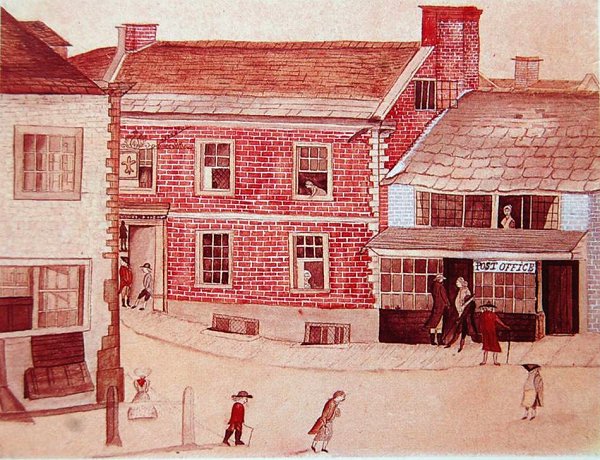
This
drawing
features in my
book "Lost Yeovil"
The earliest known depiction of High Street, this drawing, showing the Fleur-de-Lys next door to Yeovil's first Post Office (replaced in 1836 by what would become Lindsay Denner's shop - see next image), has been dated to between 1766 and 1780 based on notes on its back as to the people depicted - see next image.
The Fleur building itself is constructed in red brick with stone quoins, string course, window surrounds and the fine columned entrance. The windows are of the sash type to the front elevation but a casement window is open on the gable indicating one or more rooms in the roof space. At ground level the two grilled windows at pavement level indicate an extensive cellar.
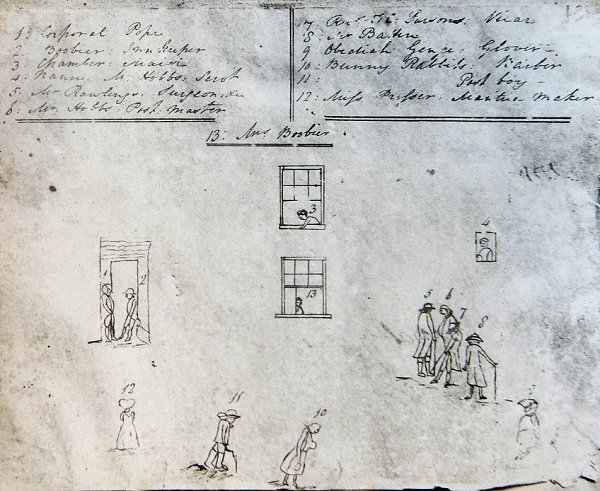
This is the back of the above coloured drawings with the people numbered and their names appended. It's not too easy to read, so the names are -
|
1.
Corporal
Pope |
8. Mr
Batten |
In 1790 the Universal British Directory carried the following "Post Office - Mails are dispatched every day, Saturday excepted, at half-past 11 o'clock in the morning for London and the intermediate towns; and for Sherbourn, Shaston, Salisbury, Portsmouth, &c. at the same hour. Every day at three o'clock in the afternoon for Ilchester, Somerton, Taunton, Bristol and the northern counties; and every day at half-past two o'clock for Crewkern, Honiton, Exeter and Cornwall. Mails are received every day from London at 2 o'clock, Monday excepted; from Bristol, Bath, Taunton and the northern counties, every day at 12 o'clock noon. John King, Postmaster."
On 13 February 1812 ironmonger Robert Jennings, according to the British Postal Service Appointment Book, became Yeovil's Postmaster - the previous incumbent, Gabriel Baker, having been dismissed - and Jennings' ironmongery shop in Silver Street became Yeovil's post office.
In its 29 May 1838 issue even the Western Flying Post was amused by the address given on a particular letter when it reported under the heading 'Superscription on a letter in Yeovil Post Office' - "For Mr Thomas Danmoore willwrite and Corigbolder lishend to sell Bear ale & Sider and portter he do live near four miles out of Yeovil on the road to Beaminster I am not Shore wather it tis in Somer Set or deset."
According to Daniel Vickery, writing in 1856 “The postal arrangements of the town are very good. The Post Office was kept for many years by Mr Gabriel Baker, who was Postmaster, and lived on the premises now occupied by Mr Raymond, as a china shop, then a low pent house, with a thatched roof (clearly not). Mr Baker was succeeded by the father of the present postmaster, Mr Jennings, who removed it to its present position.
There are three deliveries of letters, &c., every day, viz: 8.15am , 11am and 6.30pm The box for first north mail closes at 2 o'clock am; the box for London, Dorchester, and the East, at 5.30pm and for the second North and West of England, at 6pm. Letters are received with an additional stamp, 15 minutes later for North Mails, and 10 minutes later for London. Post-office orders are payable every day (except Sunday), from 10am to 4pm.”
Robert Jennings was also deeply involved in the political life of Yeovil and held the post of Portreeve from 1827 until 1838 - an unusually long term of office and, indeed, technically 'irregular'. His tenure, however, was not without its problems primarily because he was patently against the development of modern social and political reform in Yeovil. Further, it would appear that his intentions were self-serving, if not completely corrupt, and he appears to have been a complete luddite in the sense that he opposed change on the basis that it was different from his personal opinion. In consequence, much of the story of Yeovil's attainment of municipal status is repeated here in order to highlight Jennings' position and his active opposition to Yeovil's struggle to become a municipal corporation.
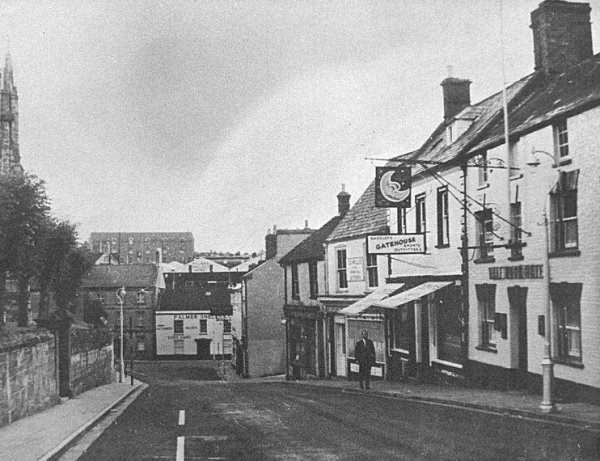
This photograph of about 1960 looks down Silver Street with the Half Moon Inn at extreme right with the building that housed Robert Jennings' ironmongery shop and Yeovil's second post office next door but one (next to the shop with the awnings).
Robert Jennings died in Yeovil in the summer of 1848, aged 77. His ironmongery business and the position of Yeovil's Postmaster went to his son, William Jennings. In 1876, at the age of 68, William retired and the Yeovil Post Office transferred from Silver Street to Princes Street. William Jennings died in Yeovil in the spring of 1880, aged 72.
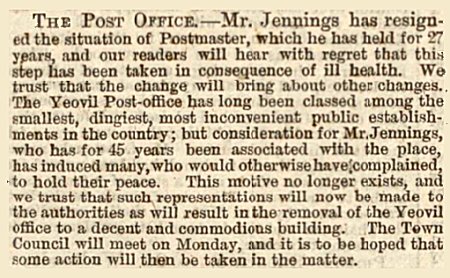
The notice of William Jennings' resignation as Postmaster from the 29 January 1875 edition of the Western Gazette in which the Silver Street Post Office "long been classed among the smallest, dingiest, most inconvenient public establishments in the country."
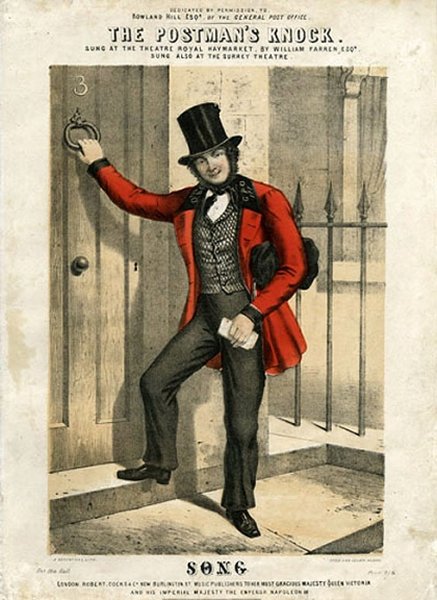
Courtesy of the
British Postal
Museum
Royal Mail issued its first uniform in 1784, for mail coach guards but the trickle down of uniforms beyond London was a slow process. Letter carriers in principal provincial cities were not issued with uniforms until 1834. 1855 marked the replacement of the letter carrier's cut away tail coat by a skirted scarlet frock coat. The illustration here is of a song sheet dated 1860.
1861 saw a significant change in the uniform as it went from being predominantly red to predominantly blue. The new letter carrier's uniform consisted of a blue frock coat with a scarlet collar, cuffs and facings, with the initials G.P.O. and the wearer's number underneath being embroidered in white on each side. The waistcoat was made to match the coat in colour, facings, and buttons. The winter trousers were also of blue cloth, with a broad scarlet stripe on the outer seam of the leg.
Post Office 3 - Princes Street
The building in Princes Street on the corner with Church Street, photographed, below was Yeovil's General Post Office after it transferred from Silver Street in 1876. In 1901 Henry Cobb was listed as being in charge of the 'Stamp Office'. It ceased to be a Post Office in 1902 when the new purpose-built Post Office opened in Middle Street (now the WH Smith building).
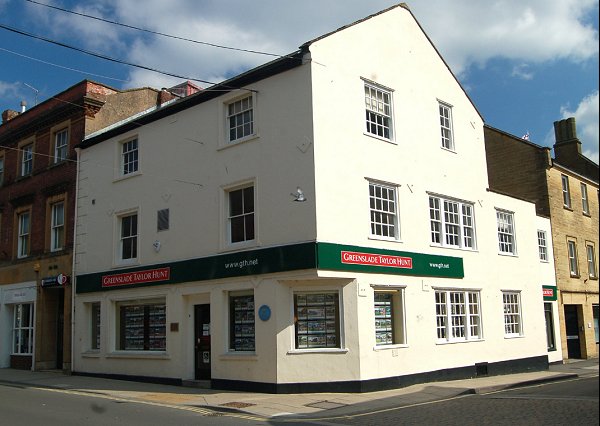
Seen from Princes Street and photographed in 2014.

A colourised photograph of 1942, seen from Church Street. Who remembers the Chelsea Tea Rooms?
The following description is from the Somerset Historic Environment Record -
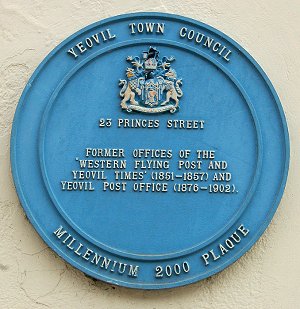 Town house,
of mid C18, now
offices.
Rendered and
colour-washed,
with Welsh
slated roof
between coped
gables: Chimney
stacks removed.
3 storeys: on
the Princes
Street facade an
off-centre
6-panelled door
set in heavy
frame but with
no surround, and
on either side
modern shop
windows, with
fascia moulded
in the
rendering: at
first floor
level two 4-pane
sash windows set
in plain stone
architraves, on
second floor two
12-pane windows
to match. The
return to Church
Street angled
with a window at
ground floor
level, and then
2-windows of
16-panes with a
matching
triple-light
sash window set
between them:
this arrangement
repeated on the
floor above: at
second floor
level one
16-pane and one
8-pane window.
Integral
2-storey flat
roofed extension
to the rear.
Town house,
of mid C18, now
offices.
Rendered and
colour-washed,
with Welsh
slated roof
between coped
gables: Chimney
stacks removed.
3 storeys: on
the Princes
Street facade an
off-centre
6-panelled door
set in heavy
frame but with
no surround, and
on either side
modern shop
windows, with
fascia moulded
in the
rendering: at
first floor
level two 4-pane
sash windows set
in plain stone
architraves, on
second floor two
12-pane windows
to match. The
return to Church
Street angled
with a window at
ground floor
level, and then
2-windows of
16-panes with a
matching
triple-light
sash window set
between them:
this arrangement
repeated on the
floor above: at
second floor
level one
16-pane and one
8-pane window.
Integral
2-storey flat
roofed extension
to the rear.
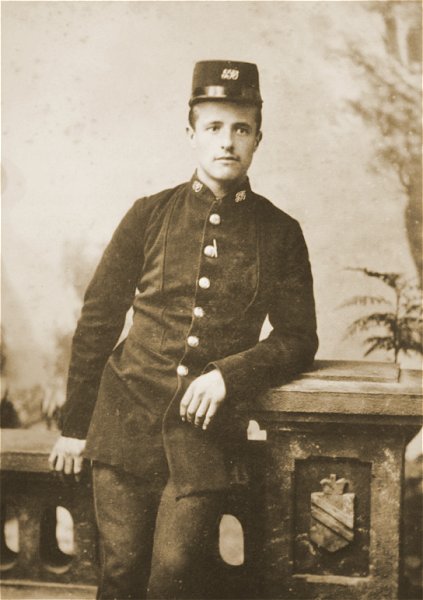
An unknown Yeovil postman poses for a formal studio photograph in his Post Office uniform during the early 1880s.
In 1862, the single peak shako hat seen here was introduced, covered in a dark blue cloth with red piping, and a straight glazed peak. In 1868, a military style tunic replaced the frock coat and waistcoat. This style was to be constant until 1910.
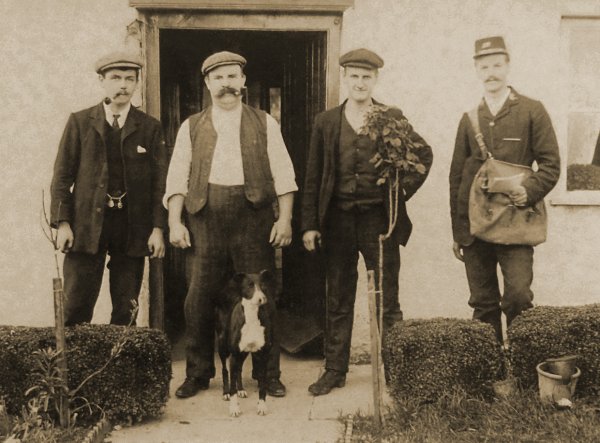
At right Yeovil postman Harry Sumsion photographed about 1895 - was he delivering the letter in his hand? or was this his family?
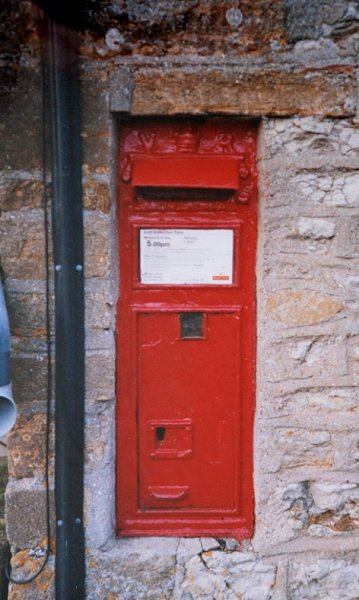
Courtesy of Bill and Audrey Robertson
Yeovil's only surviving Victorian post box. It is now disused and therefore today is painted black. It is located in the wall of a house which would, at one time, have been the first (or last) house at the western end of Preston Road but today is just off the Bluebell Road roundabout on the road to Brympton.
Post Office 4 - Middle Street / Union Street
In 1902 a new purpose-built Post Office was opened (now the WH Smith premises) on the corner of Middle Street and Union Street. This survived until 1932 with the opening of the new Post Office in King George Street in 1932. Marks and Spencer took over the building in 1933 and remained here until 1975 or 1976, when WH Smith took over the building on 31 July 1976.
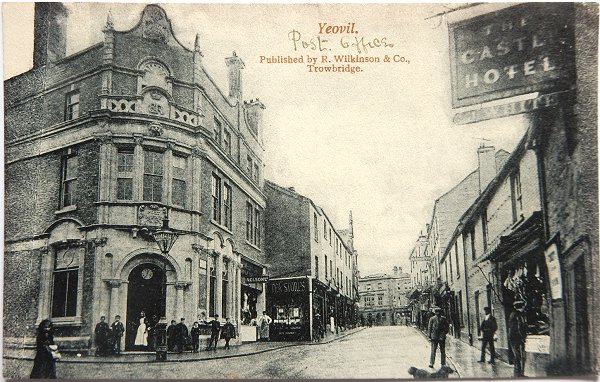
From my
collection
One of the first, if not the first, postcards of the new Post Office building. This postcard was sent in 1903 - the year after the building opened. In all these early postcards at the bottom right corner of the building (nearly at bottom centre of this postcard) is a separate shop - this was Nelson's Ltd, family butchers. The neighbouring shop jutting out into Middle Street was the Home & Colonial Tea Stores.
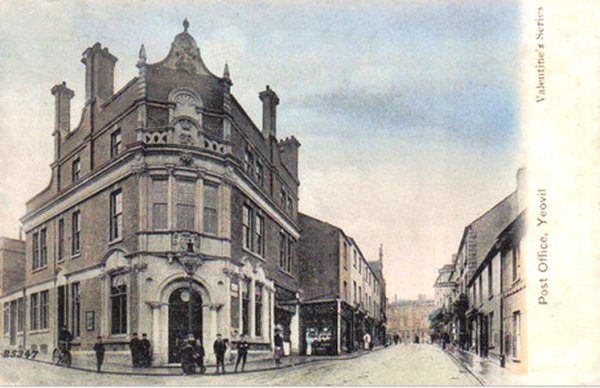
From my
collection
This hand-tinted postcard is postmarked 1904 and shows the building as built and a comparison with the colour photo below makes the differences obvious - removal of roofline details such as the chimneys.
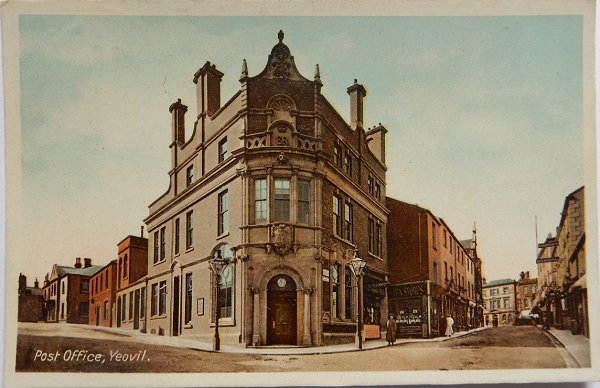
From my
collection
The photograph for this hand-tinted postcard was taken in 1905, but the card is post-marked 1913.
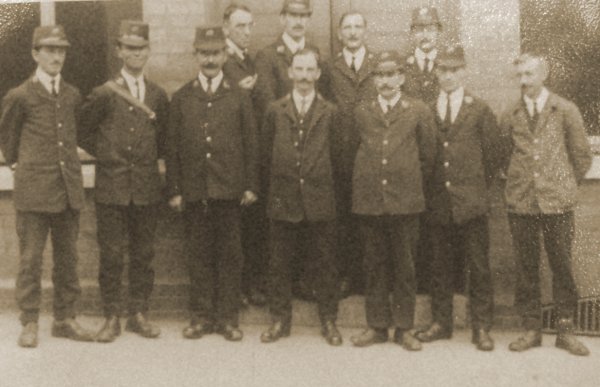
Yeovil's postmen line up for a photograph outside the Post Office in Union Street in 1910.
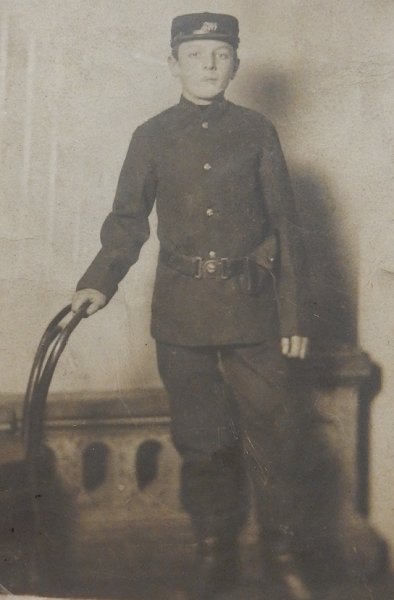
Courtesy of
Dinah Cheek
Stanley Purchase in his Post Office Messenger uniform, aged 14 in 1911.
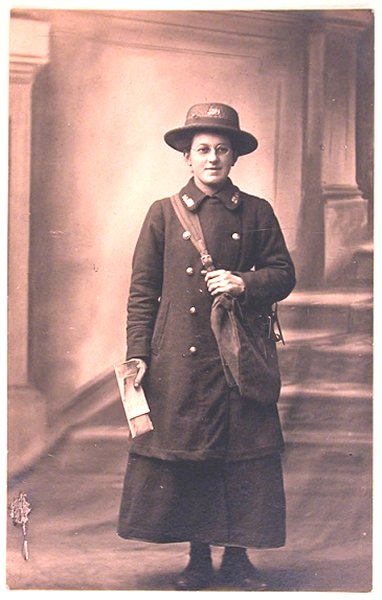
Courtesy of the
British Postal
Museum
During the First World War, with so many men away fighting, more and more women became postwomen. The above postcard (not of a Yeovil postwoman) is dated 1915 and shows the postwoman's uniform of the period.
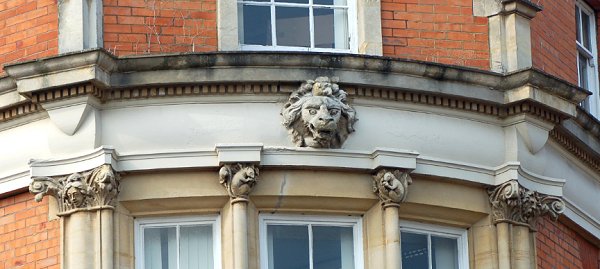
Surprisingly, much of the building's ornamentation survives, including the wonderful lion's head, two carved faces looking down from the Corinthian capitals either side and the two squirrels - all Post Office symbols, the squirrels representing National Savings.
The building ceased to be a Post Office in 1932 when the new purpose-built Post Office was built in King George Street, opposite the municipal offices. Marks and Spencer took over the building in 1933, as a faded stone sign at roof level indicates, and remained here until 1972 when WH Smith took over the building. With the closure of the King George Street post office (see below) announced in the autumn of 2018, the post office moved location to within the WH Smith store, thereby returning to its roots.
Post Office 5 - King George Street
Yeovil’s present Post Office in King George Street opened in 1932 although at the time it occupied the whole of the new buildings on the eastern side of the road. Barclays Bank took over part of this building in 1965 when sorting and administration staff transferred to Huish.
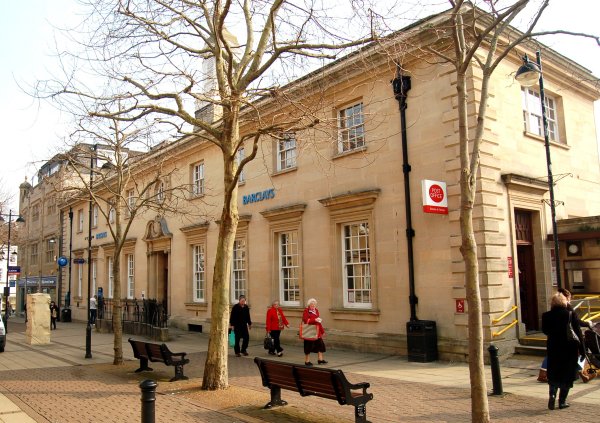
The Post Office and Barclays bank on the eastern side of King George Street, photographed in 2013. Originally the whole of the new building was used by the Post Office and opened in 1932.
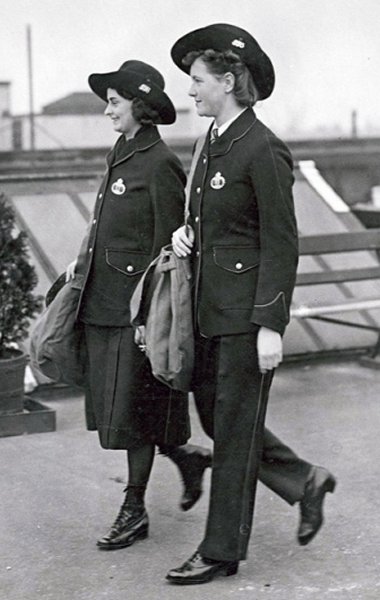
Courtesy of the
British Postal
Museum
During the Second World War, again with so many men away fighting, more and more women became postwomen. The above photograph (not of Yeovil postwomen) is dated 1941 and shows the postwomen's uniforms of the period.
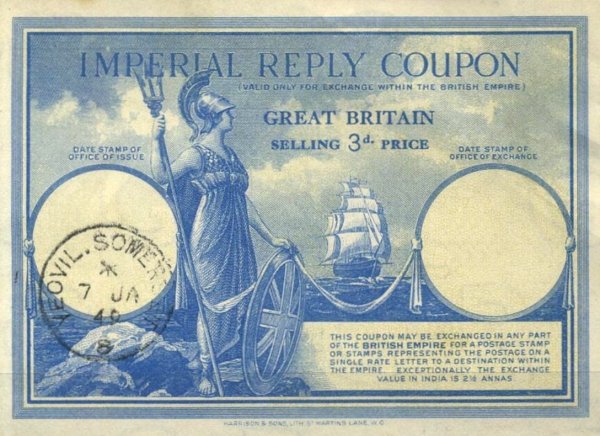
An Imperial Reply Coupon of 7 January 1949 in Yeovil. Its purpose is explained in the small print.
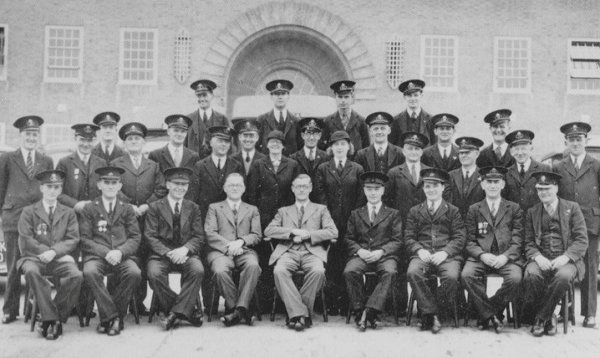
This photograph dates to 1952 and shows the Head Postmaster with his staff outside the Magistrates Courts in Petters Way. Note that only two women remain as 'posties'.
![]()
The following four photographs of the King George Street Post Office were all taken in 1969.
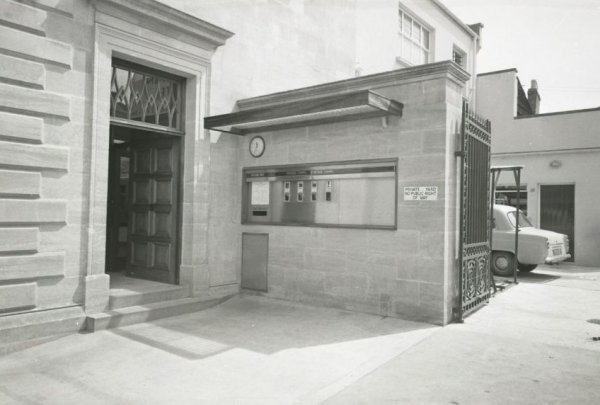
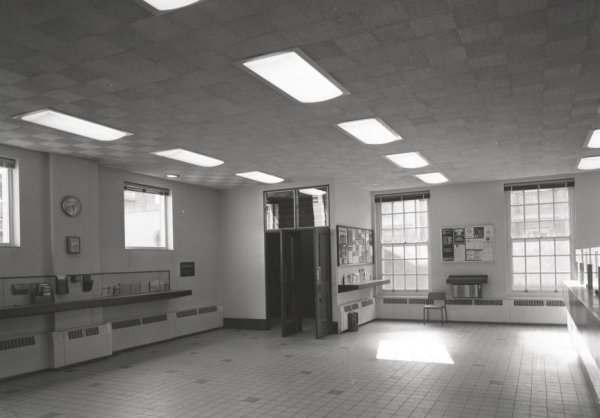
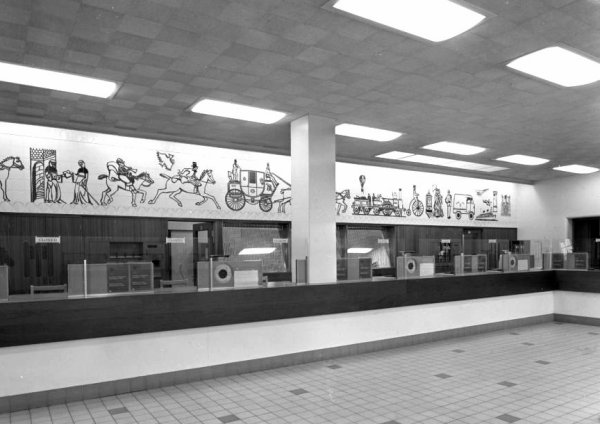
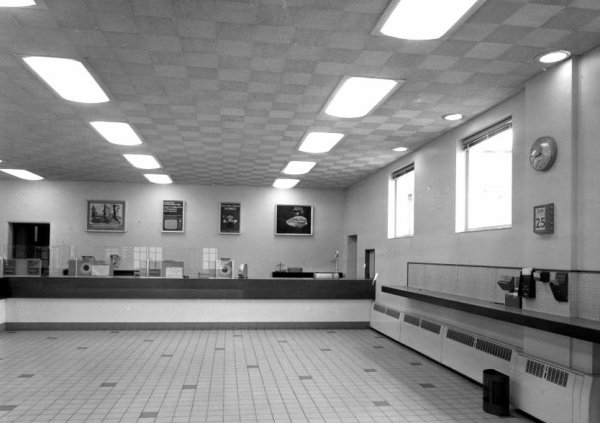
In April 1965 the headquarters of Yeovil Post Office were transferred to new premises in Huish, where "120 workers of the administrative and sorting office staff now work in spacious and light surroundings. But as far as the general public is concerned, there is little change at the King George Street office. There, some dozen counter staff remain to carry out the usual Post Office services. There are no counter facilities at the new premises. In spite of this, the King George Street premises now becomes a branch office, and Huish the Head Post Office."
.... and some sub-post offices
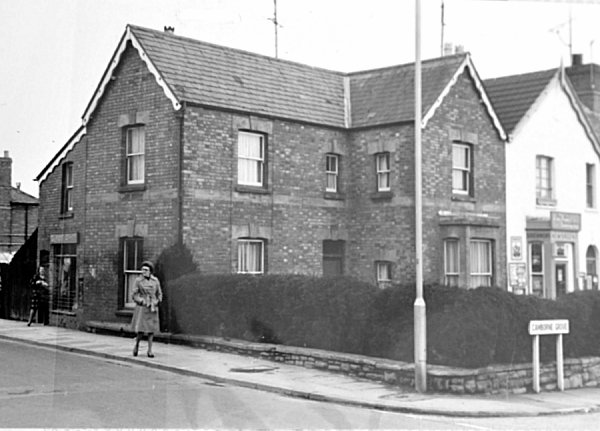
Courtesy of Bill and Audrey Robertson
The Pen Mill Post Office, at far left, on the corner of Lyde Road and Camborne Grove. Photographed from Lyde Road in the late 1950s or early 1960s. The two houses right of the lamp post are now the premises of Hart Mobility and the part of the house next to Lyde Road that included the Post Office was demolished (see next photo below).
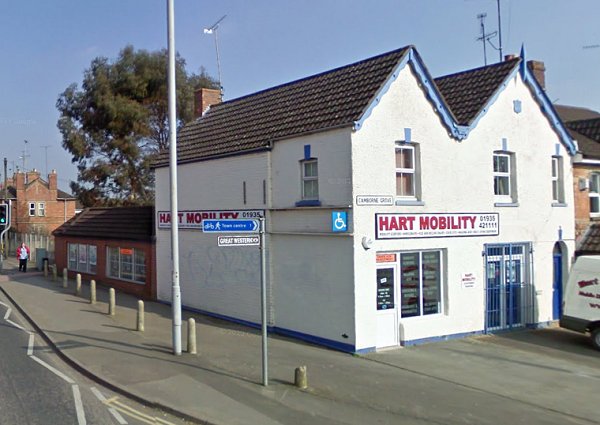
The site of the old Pen Mill Post Office today.
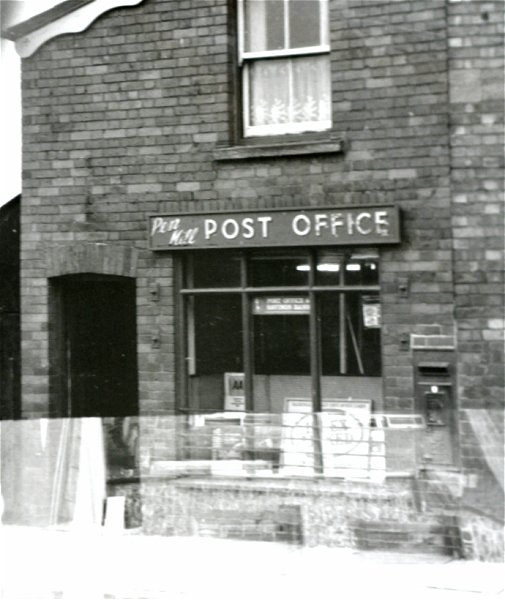
Courtesy of Bill and Audrey Robertson
The Pen Mill Post Office, seen from Lyde Road (sadly with a double exposure at the bottom of the negative).
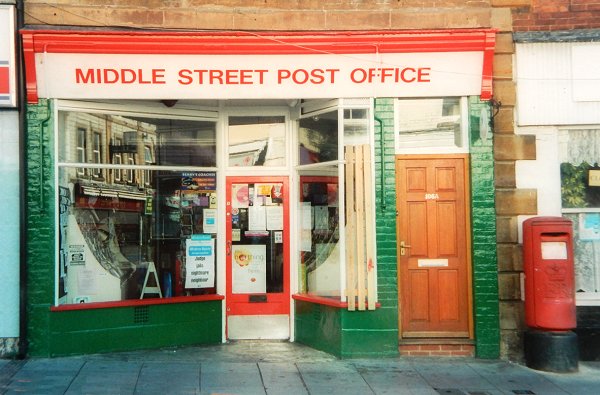
Courtesy of
Vivien and John
Cornelius
The Middle Street Post Office, photographed in 2003. The postbox is still there but the post office closed in January 2004 - it is now a tanning studio.
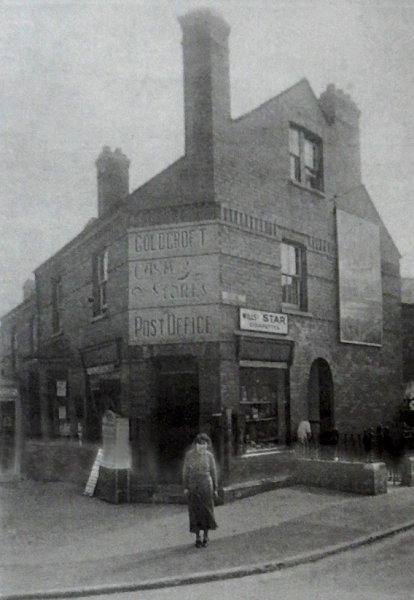
The Goldcroft Cash Stores & Post Office, photographed in the 1930s. At this time the post office was owned by Job and Lily Amblin and their daughter Gem Amblin, pictured, ran the post office. Job Amblin was also the groundsman at Yeovil Town Football Club.
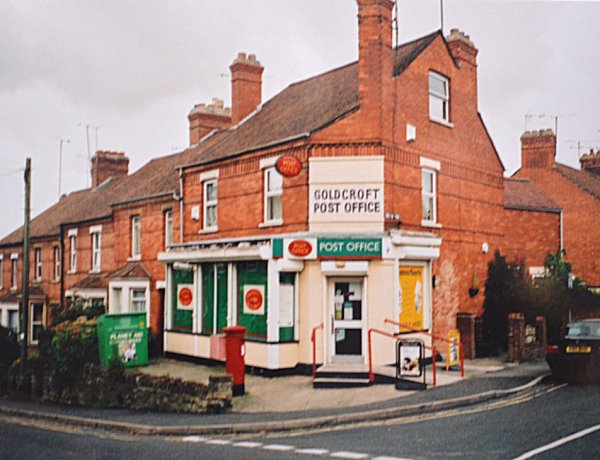
Courtesy of
Vivien and John
Cornelius
The Goldcroft Post Office, photographed in 2008. Now a private house.
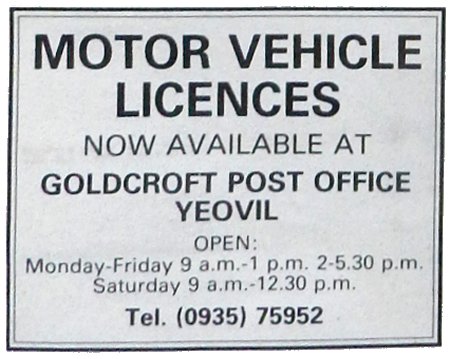
From my
collection
A 1992 advertisement in the Yeovil Express.
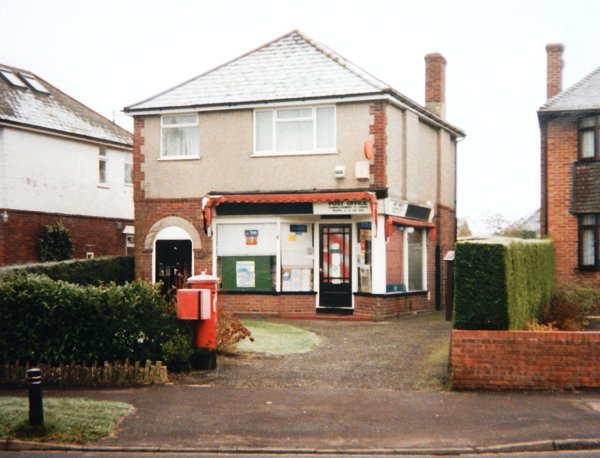
Courtesy of
Vivien and John
Cornelius
The Mudford Road Post Office, on the bend opposite the Hundred Stone. Photographed in 1998 by which time it had closed. Now a private house.
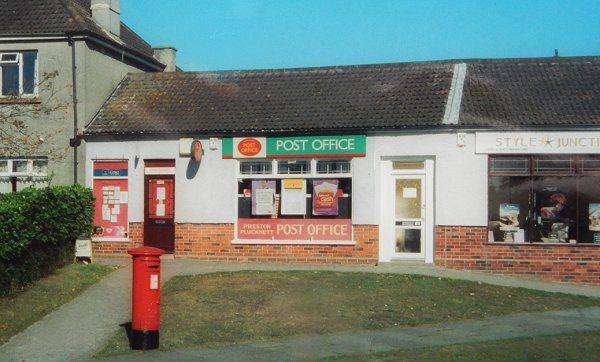
Courtesy of
Vivien and John
Cornelius
The Preston Plucknett Post Office, photographed in 2003. This too closed in January 2004 but even the postbox disappeared.
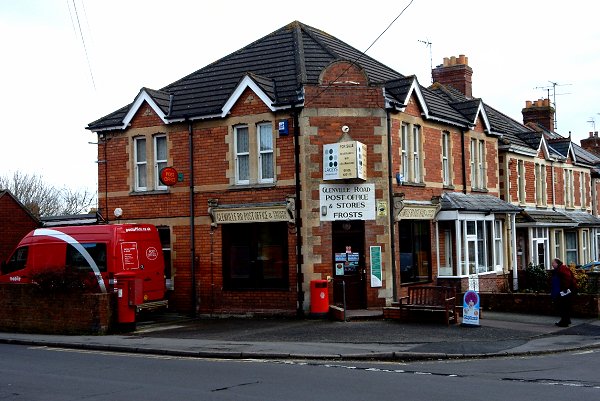
The Glenville Road Post Office photographed in 2015 from Rosebery Avenue. Now closed.